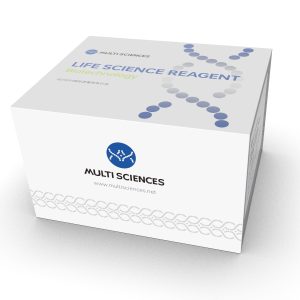Target Abstract: SOD1 belongs to the Cu-Zn superoxide dismutase family. It binds copper and zinc ions and is one of two isozymes responsible for destroying free superoxide radicals in the body. The encoded isozyme is a soluble cytoplasmic protein, acting as a homodimer to convert naturally-occuring but harmful superoxide radicals to molecular oxygen and hydrogen peroxide. The other isozyme is a mitochondrial protein. Mutations in this gene have been implicated as causes of familial amyotrophic lateral sclerosis. Rare transcript variants have been reported for this gene. SOD1 destroys radicals which are normally produced within the cells and which are toxic to biological systems. Defects in SOD1 are the cause of amyotrophic lateral sclerosis type 1 (ALS1). ALS1 is a familial form of amyotrophic lateral sclerosis, a neurodegenerative disorder affecting upper and lower motor neurons and resulting in fatal paralysis. Sensory abnormalities are absent. Death usually occurs within 2 to 5 years. The etiology of amyotrophic lateral sclerosis is likely to be multifactorial, involving both genetic and environmental factors. The disease is inherited in 5-10% of cases leading to familial forms.
SOD1 Target Infomation Overview
- Target Symbol: SOD1, superoxide dismutase 1
- Gene Groups: Superoxide dismutases
- 曾用名:IPOA
- Alias: ALS; ALS1
- Alias Names: amyotrophic lateral sclerosis 1 (adult);superoxide dismutase 1, soluble
SOD1, superoxide dismutase 1 Target Infomation by Species
- Human
- Mouse
- Rat
Human SOD1 Target Information
- Target Symbol: SOD1, superoxide dismutase 1
- Alias:
- ALS
- ALS1
- Cu/Zn superoxide dismutase
- epididymis secretory protein Li 44
- HEL-S-44
- homodimer
- hSod1
- indophenoloxidase A
- IPOA
- SOD
- SOD, soluble
- STAHP
- superoxide dismutase
- superoxide dismutase [Cu-Zn]
- superoxide dismutase 1, soluble
- superoxide dismutase, cystolic
- NCBI_Gene: 6647
- UniProtKB: P00441
Human SOD1 Predicted Functions
Enables several functions, including enzyme binding activity; superoxide dismutase activity; and transition metal ion binding activity. Involved in several processes, including hydrogen peroxide biosynthetic process; negative regulation of cholesterol biosynthetic process; and positive regulation of superoxide anion generation. Located in several cellular components, including dendrite cytoplasm; neuronal cell body; and peroxisome. Part of protein-containing complex. Colocalizes with plasma membrane. Implicated in several diseases, including Down syndrome; artery disease (multiple); eye disease (multiple); glucose metabolism disease (multiple); and neurodegenerative disease (multiple). Biomarker of several diseases, including Behcet's disease; artery disease (multiple); cutaneous leishmaniasis; eye disease (multiple); and neurodegenerative disease (multiple).
Mouse Sod1 Target Information
- Target Symbol: Sod1, superoxide dismutase 1, soluble
- Alias:
- B430204E11Rik
- Cu(2+)-Zn2+ superoxide dismutase
- Cu/Zn-SOD
- CuZnSOD
- indophenol oxidase
- Ipo-1
- Ipo1
- RIKEN cDNA B430204E11 gene
- Sod-1
- SODC
- NCBI_Gene: 20655
Mouse Sod1 Predicted Functions
Enables superoxide dismutase activity. Involved in axonal transport; negative regulation of inflammatory response; and positive regulation of phagocytosis. Acts upstream of or within several processes, including action potential initiation; determination of adult lifespan; and neurogenesis. Located in extracellular space. Is expressed in several structures, including alimentary system; brain; genitourinary system; respiratory system; and sensory organ. Used to study amyotrophic lateral sclerosis type 1; dry eye syndrome; and low tension glaucoma. Human ortholog(s) of this gene implicated in several diseases, including Down syndrome; artery disease (multiple); eye disease (multiple); glucose metabolism disease (multiple); and neurodegenerative disease (multiple). Orthologous to human SOD1 (superoxide dismutase 1).
Rat Sod1 Target Information
- Target Symbol: Sod1, superoxide dismutase 1
- Alias:
- CuZnSOD
- Superoxide dimutase 1 soluble
- superoxide dismutase
- superoxide dismutase [Cu-Zn]
- Superoxide dismutase 1 soluble
- superoxide dismutase 1, soluble
- NCBI_Gene: 24786
Rat Sod1 Predicted Functions
Enables copper ion binding activity; protein phosphatase 2B binding activity; and superoxide dismutase activity. Involved in several processes, including cellular response to metal ion; hydrogen peroxide biosynthetic process; and removal of superoxide radicals. Located in several cellular components, including dense core granule; neuronal cell body; and peroxisome. Part of protein-containing complex. Used to study hyperthyroidism; hypothyroidism; middle cerebral artery infarction; and sciatic neuropathy. Biomarker of several diseases, including artery disease (multiple); congenital diaphragmatic hernia; middle cerebral artery infarction; non-alcoholic steatohepatitis; and ocular hypertension. Human ortholog(s) of this gene implicated in several diseases, including Down syndrome; artery disease (multiple); eye disease (multiple); glucose metabolism disease (multiple); and neurodegenerative disease (multiple). Orthologous to human SOD1 (superoxide dismutase 1).

